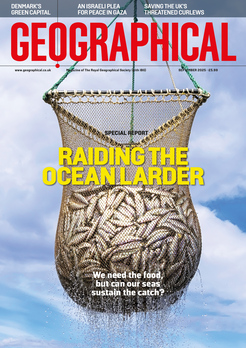
New study finds 75 per cent of heat-related deaths occur in people under the age of 35, contradicting previous studies
By
A new study on mortality in Mexico has found 75 per cent of heat-related deaths occur in people under 35 – the very group which scientists have previously thought are the most resistant to heat.
From 1998 to 2019, Mexico suffered around 3,300 heat-related deaths per year, and of these nearly one third occurred in those aged between 18-35. Children under five – especially infants – were also recorded to be particularly vulnerable.
But to the surprise of researchers, the impact on those between the ages of 50 and 70 was significantly lower, with the least amount of heat-related mortality out of any age category. Instead, elderly people were found to die predominately from modest cold in Mexico, as there are many climate zones with high-elevation which can become chilly.
To come to this conclusion, researchers correlated excess mortality – the number of deaths above or below the average – with temperatures on the ‘wet-bulb’ scale, a measurement which takes into account the magnified effects of heat when it is combined with humidity.
Why are young people more affected?
Several factors may be at play to contribute to young people’s greater likelihood of dying from heat-related causes. The first is labour: young adults are more likely than their elder counterparts to work in outdoor labour such as farming and construction, jobs which entail far greater risks of dehydration and heat stroke.
Indoor manufacturing jobs can also pose this risk, since a lack of air conditioning makes for sweltering and unsafe conditions.

So great is the risk from one’s job choice that a previous study found death certificates of working-age men were more likely to list extreme weather as a cause than those of other groups.
‘These are the more junior people, low on the totem pole, who probably do the lion’s share of hard work, with inflexible work arrangements,” said study coauthor and affiliate of Columbia University’s Climate School, Jeffrey Shrader.
The relation between job type and risk of heat-related death sparks concern amongst scientists, since other poorer and hotter countries than Mexico – mainly those in Africa and Asia – have both younger populations and a greater percentage that work in manual labour. If Mexico is any indicator of the situation across the world, the scale of heat-related deaths across the world could be major.

As well as job type, another factor impacting young adults’ risk is their greater likelihood to participate in strenuous outdoor sports, contributing to heat stroke and exhaustion.
For young children and infants, the reasons for their greater risk of heat-related deaths is more well-understood. As their ability to sweat and cool off has not yet fully developed – combined with a propensity to absorb heat much quicker than adults – they face a larger likelihood of exhaustion and heat stroke. As well as this, their developing immune systems make them more prone to ailments commonly experienced during humid heat, such as diarrheal diseases.
Temperature kills
Although many may believe that heat is the primary cause of temperature-related deaths, it is in fact cold that is the world’s number one cause of temperature-related mortality. However, heat-related deaths have been on the rise since 2000 and expected to continue.
To ensure that the scale of heat-related deaths does not spiral in the face of an ever-heating climate, research team are now eager to bolster their studies by expanding into other countries including Brazil and the US to find out the effects of extreme warm weather there.




